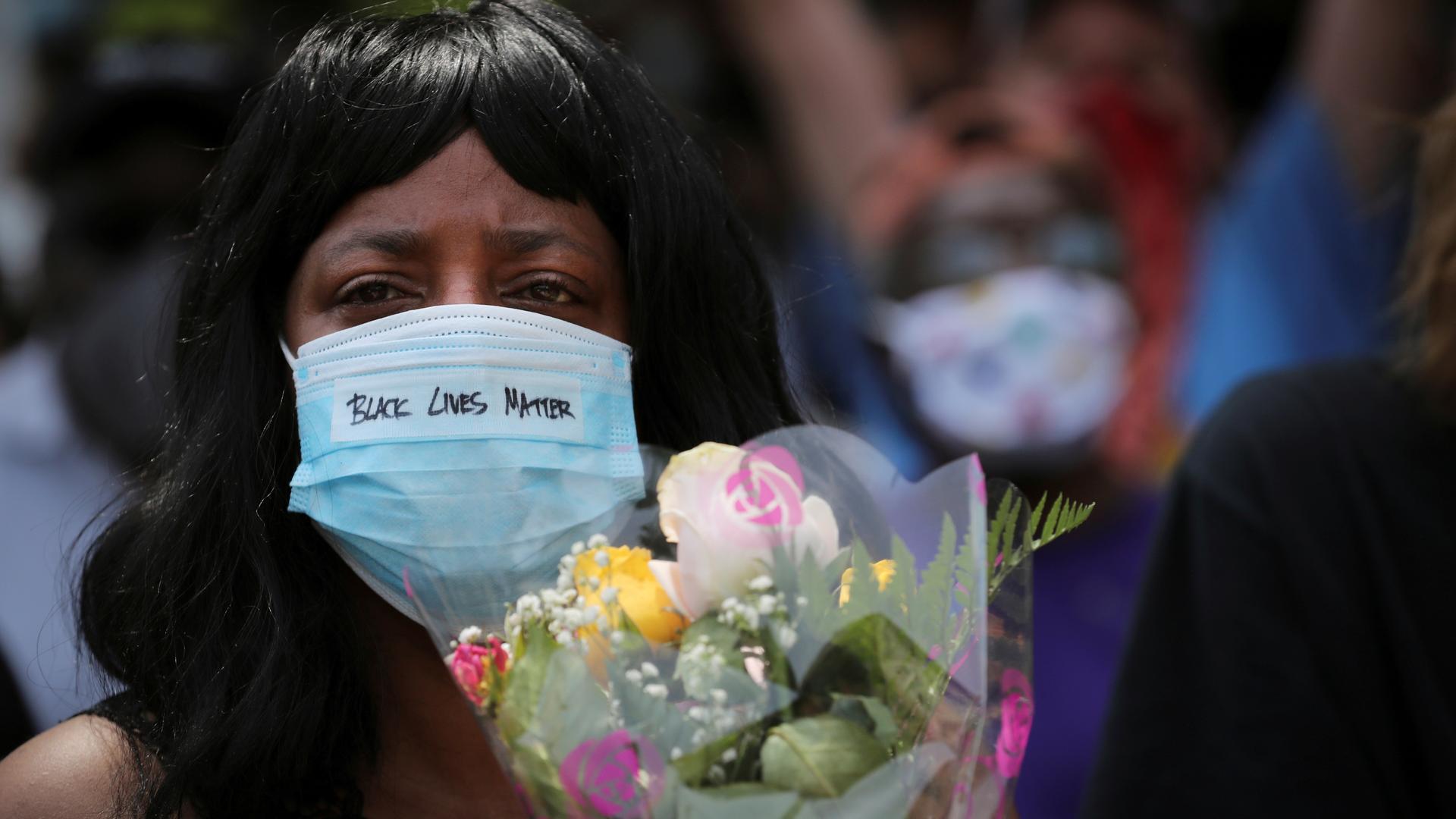Even if George Floyd survived Covid-19, he couldn’t survive police violence.
Towards the end of May, the Covid-19 death toll in the United States surpassed 100,000 – higher than in any other nation in the world. This grim milestone was reached just four months after the first diagnosed case in the US.
When a pandemic ravages a particular society, it serves as a stress test, revealing and exacerbating existing tensions and cleavages.
Within these four months, the US has witnessed the ensuing xenophobic reactions against Asian-Americans. Then the killing of George Floyd by police officers in Minneapolis sparked national protests.
What did this stress test during the pandemic reveal? On the first level it revealed systemic racism, both on a socio-economic level and embedded in institutions of the American state.
Floyd’s recent autopsy revealed that he himself had contracted the coronavirus, highlighting two troubling trends in American society.
African-Americans are disproportionately vulnerable to contracting the virus as many have essential vocations that do not allow them the luxury of working from home.
Yet even if he survived the virus, he did not survive the fact that African-Americans are disproportionately a target of police violence.
On the second level these twin crises demonstrated another of Trump’s double standards.
In the face of a public health crisis Trump refused to invoke the Defense Production Act of 1950 to provide critical medical supplies.
However, a popular reaction against systemic racism led to his threat to invoke the Insurrection Act of 1807, using the national military for domestic law enforcement, including the deployment of helicopters and troops to “secure” the capital, Washington DC.
In other words, Trump failed to use power of the federal government in dealing with Covid-19, placing the burden on the states, but threatened to use the military, a national institution, against those very states as they allegedly failed to provide “public safety.”
Racism, xenophobia and pandemics
Covid-19 provides an opportunity to ponder the long timespan of two viruses that have afflicted human societies: the actual biological microorganism and the ensuing xenophobia and racism it incubates.
Scientists have examined the long history of diseases and its evolutionary relationship with xenophobia. One scientist argues that in our evolutionary past humans were instinctively wary of close contact with strangers to guard against infectious disease.
Another argues xenophobia is a behavioral component to the immune system, operating outside conscious awareness, to prevent novel exposure to pathogens.
The emotion of disgust precludes contact with potentially infected objects and people, keeping the “unclean” outgroup members away from the “clean” ingroup.
The link between disgust, pathogen avoidance, and xenophobia, it is argued, is related to immune systems being more effective against local pathogens rather than foreign ones.
A tragic case in point would be Indigenous Americans who had never seen horses, cows, or pigs before the Spanish arrived with them after 1492, and were suddenly exposed to zoonotic viruses that they never had a chance to build immunities for.
This is not to suggest biological determinism excuses racism. Rather George Floyd’s tragic killing should be a wake-up call to acknowledge that both biological and social viruses have plagued humanity over millennia and that both are daunting threats that need to be addressed going into the 21st century.
The killing of George Floyd and Covid-19
Lauren Powell, a health care specialist in the US, wrote of a looming threat she anticipated prior to the killing of Floyd: “My biggest fear as a Black woman and public health leader was the all-too-likely murder of an unarmed Black person at the hands of police leading to mass protests amid the virulence of two infectious diseases: racism and Covid-19.”
Just as I described a pandemic as a “stress test” she writes, “Covid-19 continues to unearth the racist and unjust cracks in our society.”
Trump likes to polarise in order to mobilise. And when he took to Twitter, he used the “cracks” in American society to mobilize his base, by condemning demonstrators as “THUGS,” and then tweeting: “When the looting starts, the shooting starts!”.
In response, tweets of resistance emerged.
Ryan Zavis, a graphic novelist, contextualised the crises afflicting the US with a historical comparison. He tweeted: “America be like: lets combine the 1918 Spanish flu, 1930’s great depression, and the 1960’s race riots all into one single year #covid19#protests2020”.
One user tweeted their disapproval of the Trump administration’s response to these crises: “something about the President of the United States threatening to shoot his own people in the middle of a global pandemic because they are protesting racial injustice & systematic murder should definitely bother you”.
And Jeff Bercovici, deputy business editor at the Los Angeles Times, tweeted: “Boy you’d think a country that can equip every cop like a soldier could equip every doctor like a doctor?”
This tweet highlights how Trump’s responses to a virus and racism are intertwined. The American president failed to adequately deal with the biological virus in terms of supporting the frontline medical staff, yet in response to a social virus, he is oblivious and seeks to deploy the military as a response.
Some of these tweets may get a 100 likes, to the 719 thousand likes of the LA Times editor. And while these comments are only three citizens critiquing their president, their significance is not the numbers. It is in how they represent greater sentiments in society, a form of digital folklore of resistance in the face of Trump’s attempts to “polarise and mobilise” his base during the pandemic or anti-racism protests.
Powell concludes, “While a vaccine for Covid-19 is in development, no sweeping cure currently exists for racism.”
Indeed, the US has a president whose policies not only have led to the further spread of a biological virus, but a social one as well.
Author: Ibrahim Al Marashi
Ibrahim al-Marashi is an associate professor at the Department of History, California State University, San Marcos. He is the co-author of The Modern History of Iraq, 4th edition.
Source










Discussion about this post